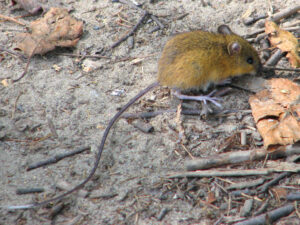 When I was small, and not too young, because I could read, I used to love to choose books from the library that had anthropomorphized mice as the main characters. These cute little furry creatures just seemed to have a charming life. The setting was usually a nice little wood, with a quaint log and beautiful foliage of giant plants. They spent their days and nights in this wood collecting food, going on adventures, and learning about life. After a quick search it appears that mice in literature have not waned. Plenty of exciting and adventurous tales await any mice loving reader.
When I was small, and not too young, because I could read, I used to love to choose books from the library that had anthropomorphized mice as the main characters. These cute little furry creatures just seemed to have a charming life. The setting was usually a nice little wood, with a quaint log and beautiful foliage of giant plants. They spent their days and nights in this wood collecting food, going on adventures, and learning about life. After a quick search it appears that mice in literature have not waned. Plenty of exciting and adventurous tales await any mice loving reader.
The mice at Woodland Dunes, both in the old Rahmlow farmhouse office and out in the woods and prairies, may also lead a charmed life. We have documented several species over the years. We have the house mouse, the white-footed mouse, the deer mouse, the meadow jumping mouse and the woodland jumping mouse. Of course, these creatures, especially the house mice, may turn into pests when they set up shop in territory deemed by humans as theirs. And yes, mice, such as deer mice, can wreak havoc with a virus deadly to us and we should be weary.
However, the woodland jumping mouse, Napaeozpus insignis, is quite an amazing and beneficial critter. This mouse, as the name suggests, may jump up to NINE feet. They have kangaroo-like back legs and feet that make this possible. Combine those feet with a tail that can be just over six inches long–it enables balance and expert climbing. Their tail is white tipped, which is one of the traits that distinguishes them from most meadow jumping mice. In Wisconsin woodland jumping mice are listed as a special concern species as habitat loss may be reducing their number. These mice like coniferous forests or hemlock-hardwood forest cover with thick herbaceous cover and coarse woody debris (downed decaying logs). The other interesting observation is that this mouse is not tolerant of prolonged high heat. It seems that this mouse does not occur where the summer heat exceeds about 70 degrees for prolonged periods.
Another interesting note about the mice is their diet. They enjoy seeds, vegetation such as ferns, raspberries, blackberries, insects, and larvae of insects. However, it has been discovered that they also eat fungi! They will eat some fruiting bodies, think mushrooms, but they also consume underground fungi, think mycelia. This practice helps to distribute mycorrhizae that is beneficial for trees. They are not prone to stashing food. These mice are primarily nocturnal and can be somewhat crepuscular. They hibernate for the winter and usually wake up sometime in May with the males getting up first.
Mice are subject to predators such as screech owls, minks, skunks, and foxes. Luckily, they have a tricolor coat that camouflages them much of the time.
photo of woodland jumping mouse by Wikipedia
